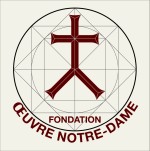Late Gothic vaults and their complex stone members: Recovering historical design procedures, implementing knowledge in restoration practice (ERC Proof of Concept Grant)
The proof of concept aims to transfer the results of the scientific research on design procedures of Late Gothic vaults into the practice of restoration of the architectural heritage. These structures are extremely complex in their geometry, with stone ribs soaring along three-dimensional curves and intersecting on multiple levels at the keystones. In the current research, we achieved a deeper understanding about the principles of their geometric design, and about how the instructions for producing their single stone elements were formulated. However, at present this knowledge is not available in the restoration practice. Hence, in case of retrofit or the necessity of reproducing damaged stone elements, there is the risk of altering the peculiar geometric features and distorting the character of these unique masterpieces of historic architecture.
A practical implementation of the scientific results, with the potential of significantly improving the quality of maintenance and restoration, can be achieved by defining practical working procedures that reproduce the original design principles, by documenting these procedures and by creating a demonstrator. For the development of these proposed working procedures, their testing and their dissemination among apprentices and specialized stone-masons, a collaboration has been established with the Workshops or Fabrics of several major Cathedrals. These are the institutions engaged in the conservation of Late Mediaeval and Early Modern stone constructions and in keeping alive the historical technical knowledge of stone masonry.
In the collaboration and mutual exchange between the scientific team and stone masons who are specialized in historical stonework as well as in traditional methods of setting-out, it is possible to reconstruct in detail all the steps of the translation process from the geometric design of the entire vault to the drawing and carving of the single components. The shape of the original ribs and keystones is reproduced with absolute fidelity, taking in account the historical context in the development of applied geometry, and employing historical stone working technique.
The profound understanding of the graphical procedures in the design and of the information transfer from design to construction is a key to the interpretation of the breathtakingly complex stone structures which constitute some of the finest masterpieces in the History of Architecture.
Team
David Wendland (P. I.), Frédéric Degenève, Nicolas Eberhardt, Christian Mai, María José Ventas Sierra.
In collaboration with Œuvre Notre-Dame de Strasbourg, Münsterbauhütte Freiburg i.Br., Friedrich-Weinbrenner-Gewerbeschule Freiburg i.Br., Dombauhütte Köln, Dombauhütte Passau.
Project Record
Title: Late Gothic Vaults and their Complex Stone Members: Recovering Historical Design Procedures, Implementing Knowledge in Restoration Practice (ERC Proof of Concept Grant, Grant No. 693779)
Acronym: REGothicVaultElements
Principal Investigator: David Wendland
Funding Organization: European Research Council (ERC)
Project Duration: Feb 2016 – Jul 2017
Host Institution: Technische Universität Dresden – www.tu-dresden.de
Further Information: http://cordis.europa.eu/project/rcn/199369_en.html
other collaborating institutions
Spätgotische Gewölbe und ihre komplexen Steinbauteile: Rekonstruktion historischer Planungsprozesse, Wissenstransfer in die Praxis der Restaurierung
Late Gothic Vaults and their Complex Stone Members: Recovering Historical Design Procedures, Implementing Knowledge in Restoration Practice (ERC Proof of Concept Grant)
Œuvre Notre-Dame de Strasbourg
Münsterbauhütte Freiburg i.Br.
Friedrich-Weinbrenner-Gewerbeschule Freiburg i.Br.
Dombauhütte Köln
Dombauhütte Passau

